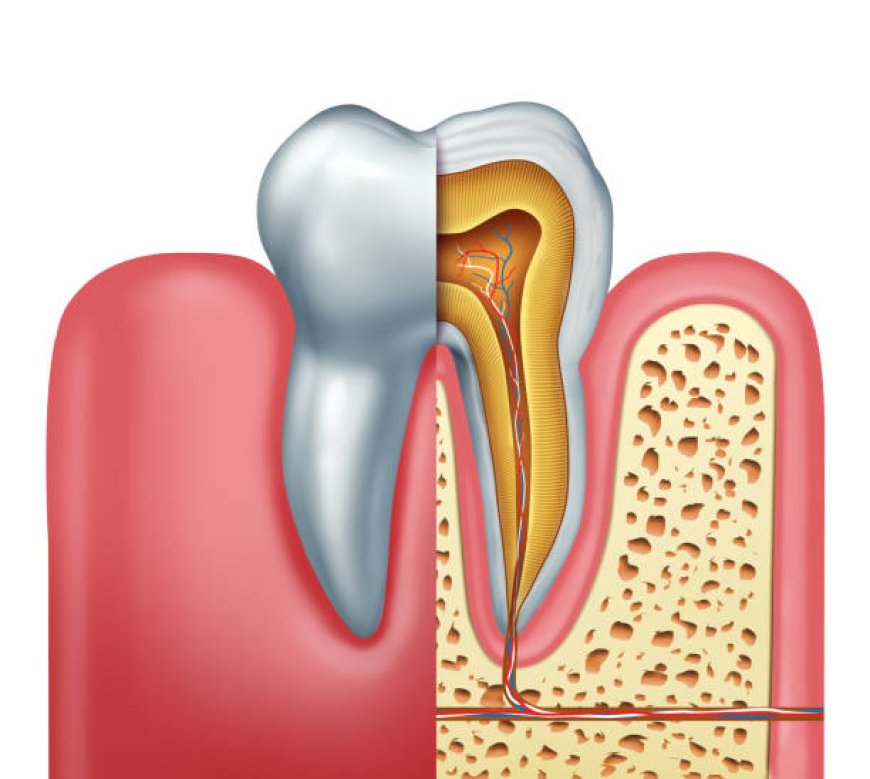Understanding Root Canal Treatment: What You Need to Know
Root canal treatment, also known as endodontic therapy, addresses problems within the tooth's pulp—a soft tissue containing nerves, blood vessels, and connective tissue.

Root canal treatment, often shrouded in myths and fears, is a common dental procedure designed to save a tooth that is badly decayed or infected. Contrary to popular belief, modern root canal treatments are relatively painless and highly effective. This blog aims to clarify what root canal treatment involves, why it’s necessary, and what patients can expect before, during, and after the procedure.
What Is a Root Canal Treatment?
Root canal treatment, also known as endodontic therapy, addresses problems within the tooth's pulp—a soft tissue containing nerves, blood vessels, and connective tissue. The pulp can become infected or inflamed due to deep decay, repeated dental procedures on the same tooth, cracks or chips in the tooth, or trauma.
Signs You Might Need a Root Canal
Several symptoms can indicate that a root canal is necessary:
- Severe Toothache: Persistent pain when chewing or applying pressure.
- Sensitivity: Prolonged sensitivity to hot or cold temperatures.
- Discoloration: Darkening of the tooth.
- Swelling: Tenderness and swelling in the gums near the affected tooth.
- Abscess: A recurring pimple on the gums.
If you experience any of these symptoms, consult your dentist for an evaluation. Early intervention can prevent the infection from spreading and preserve your natural tooth.
The Root Canal Procedure
-
Diagnosis and Preparation: The dentist starts with a thorough examination and X-rays to determine the extent of the damage. Local anesthesia is administered to numb the area, ensuring a pain-free experience.
-
Accessing the Pulp: A small opening is made in the crown of the tooth to access the infected pulp. Specialized dental tools are used to remove the pulp from the pulp chamber and root canals.
-
Cleaning and Shaping: The now-empty canals are meticulously cleaned and shaped to eliminate any bacteria and infected tissue. This step is crucial for preventing further infection.
-
Filling the Canals: The cleaned canals are filled with a biocompatible material called gutta-percha. This rubber-like material seals the canals to prevent future infection.
-
Restoration: After the root canal is completed, the tooth is temporarily filled. A crown or permanent restoration is usually required to protect and strengthen the tooth. Until this is done, patients should avoid chewing with the treated tooth.
Post-Treatment Care
Post-treatment discomfort is common but usually mild and manageable with over-the-counter pain relievers. Some tips for a smooth recovery include:
- Maintain Oral Hygiene: Brush and floss regularly to keep the area clean.
- Avoid Hard Foods: Refrain from chewing hard foods until the permanent restoration is in place.
- Follow-Up Visits: Attend all follow-up appointments to ensure proper healing and restoration.
Benefits of Root Canal Treatment
Root canal treatment offers several significant benefits:
- Pain Relief: It eliminates the source of the pain caused by the infected pulp.
- Tooth Preservation: It saves the natural tooth, which is often preferable to extraction.
- Restored Functionality: With a proper restoration, the tooth can function normally for many years.
Debunking Myths
Several misconceptions surround root canal treatments:
- Myth: Root Canals Are Painful: Modern techniques and anesthesia make the procedure virtually painless. Most patients report feeling no more discomfort than during a routine filling.
- Myth: Root Canal-Treated Teeth Are Fragile: While the tooth may become brittle after the pulp is removed, a crown or restoration can protect and strengthen it.
Conclusion
Root canal treatment is a valuable procedure that can save your natural teeth and prevent the complications associated with tooth loss. Understanding the process and its benefits can alleviate anxiety and encourage timely treatment. If you experience any symptoms suggesting the need for a root canal, consult your dentist promptly to ensure the best possible outcome for your oral health.
In conclusion, modern root canal treatment is a safe and effective way to treat tooth infections and save your natural teeth. By understanding the process and debunking common myths, you can approach this procedure with confidence and take the necessary steps to maintain your oral health












